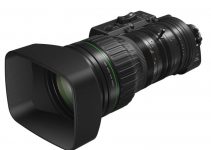Gimbal stabilizers are exactly what you need to create the perfect visual aesthetics for any of your narrative productions and immerse your audience deeper into the story. You can easily do so by employing some essential gimbal movements on any creative project you have to do.
So, whether you’re already a pro or you’re someone who is just starting out in the world of filmmaking, here are some essential gimbal moves that you should know about for your creative workflow, especially if you want your stories to be told in the most captivating, unique and impactful way.
The Parallax
First up is this particular gimbal move, called the Parallax. The name sounds like something from “Stranger Things, ” but it is one move that you might want to add to your list. The Parallax is the movement that separates your subject from the background.
Push In and Pull Out
This one is self-explanatory. You can move your camera closer or farther away from your subject.
Mouse Eye
In more simpler terms, this is a lower version of a low-angle shot. The Mouse Eye move is a lower angle push-in. This makes the subject appear much larger in the frame.
Push In and Pull Out with Parallax
This is a combination of the first two camera moves. This combination puts emphasis on the subject while separating them from the background of the frame.
Bird’s Eye
When there’s a mouse eye movement, there’s the bird’s eye movement. It’s very much like the Mouse Eye movement, but you’re moving your camera from a very high angle, so the subject appears much smaller. You put your camera on an overhead rig and film your subject from above.
Corkscrew
Sometimes, the emotion that is conveyed in a scene also lies in how the camera moves. Avid film buffs can probably see this particular move in suspense movies or even in the classic noir films. The Corkscrew is a rotating Dutch angle, which makes it a good move for making an uneasy feeling in a scene.
Car Rig
This particular gimbal move is perfect for car scenes or car chases. This is also quite self-explanatory. You mount your camera and to a car.
Orbit
This particular move is a very dynamic one. Simply put, the Orbit is you moving the camera around the subject to 360 degrees.
Whip Pan
This movement is very evident in some of Wes Anderson’s films as well as in the quick cuts in Edgar Wright’s films as well. The Whip Pan is just a very quick pan from one part to another.
Skyfall
No, we’re not talking about the James Bond movie. Skyfall is when you tilt your camera up to the sky and slowly bring it down to the subject. This particular move is ideal for scenes with big reveals.
Poor Man’s Jib
If you don’t have a Jib, no problem! You can improvise with this gimbal move. Crouch on a sturdy box or stool, then bring your camera up over your head until you find yourself standing upright. You’ve become your own Jib!
Ground Up
This one is beneficial for those extreme transformations or character reveals as well. This one is just like Skyfall, only you tilt your camera from the ground and up to the subject.
Toe to Head
This is also similar to Ground Up, but just a little bit higher. Instead from the ground, you tilt your camera from your subject’s toes up to their head.
And there you have it, some gimbal moves you can make for you to scale the heights of your creative effort. Of course, there are many other tricks you can try out and implement in your daily workflow. So, if you want to take your gimbal work to the next level, experiment with a few movements, or make up some combinations on your own.
[source: Aputure]
Disclaimer: As an Amazon Associate partner and participant in B&H and Adorama Affiliate programmes, we earn a small comission from each purchase made through the affiliate links listed above at no additional cost to you.
Claim your copy of DAVINCI RESOLVE - SIMPLIFIED COURSE with 50% off! Get Instant Access!





